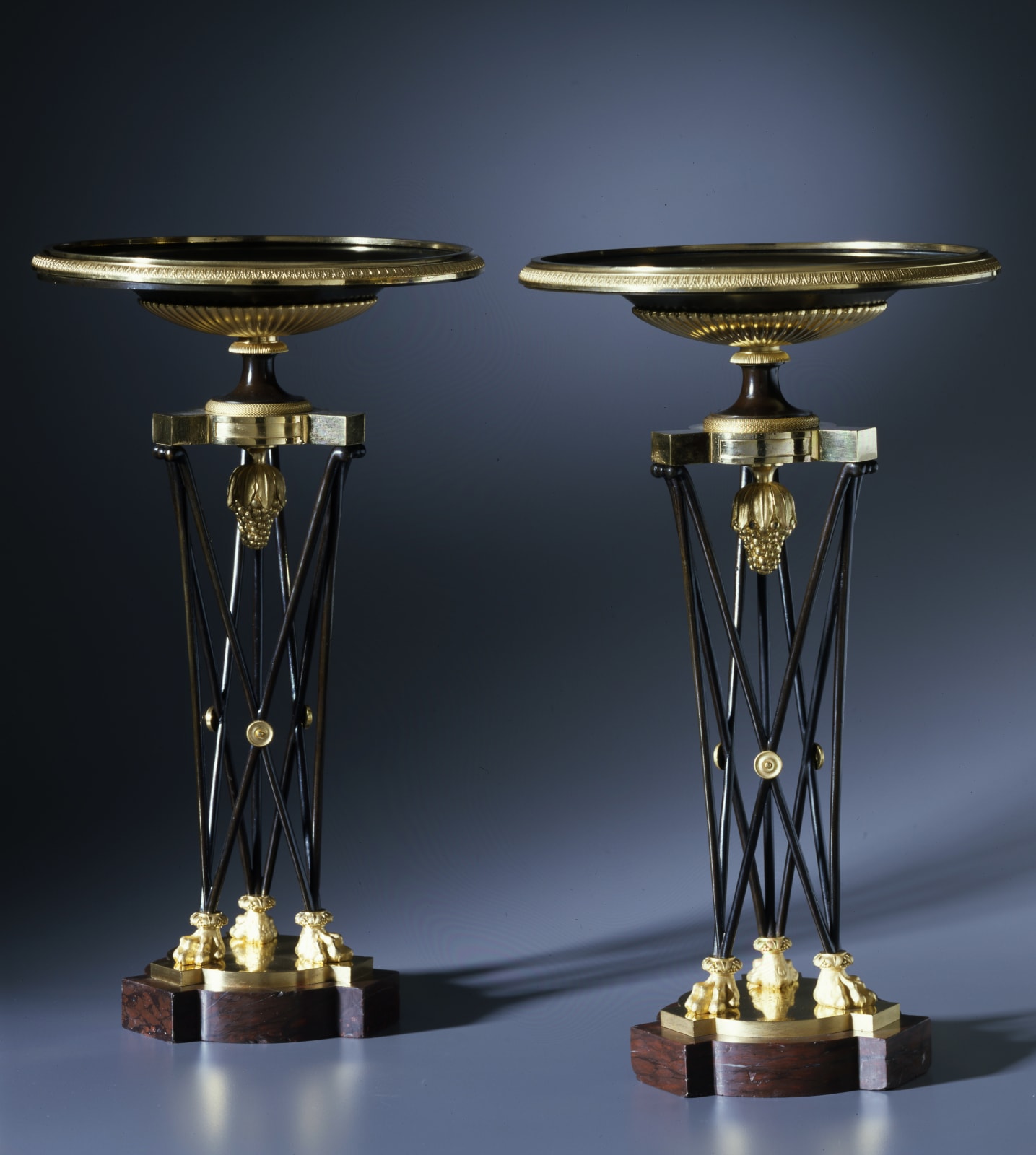Unknown
A very fine pair of Empire gilt and patinated bronze coupes, each shaped as a tripod athénienne with a shallow gilt and patinated dish on a shaped support centred below by a foliate and berried terminal, on three sets of tri-formed cross-tiered supports joined by medallion centred motifs, each of the supports terminated by lion paw feet on a shape plinth on a correspondingly shaped rouge griotte marble base
Paris, date circa 1805
Height 51.5, width 30 cm. each.
Coupes, such as this pair were very fashionable among the wealthy sectors of society. Their basic design was derived from Antique tripods, especially athéniennes, which were a type of urn (usually having a lid) supported on a classical tripod stand and were adapted for burning perfumes, as plant holders or as a wash stand. The first athénienne was created in 1773 by Jean-Henri Eberts (1726-1803), which he published in an advertisement of about the same date. As one of the most overtly archaeological inspired items of the Louis XVI and subsequent Empire style they had a profound influence on contemporary designers. The inspiration for Eberts's piece may have itself been inspired by an athénienne as portrayed in a painting by Joseph-Marie Vien shown at the Salon of 1763 and engraved as La Vertueuse Athénienne by C. -F. Flipart in 1765, featuring an athénienne with rams' heads and cloven hoof tripod supports as well as a pineapple finial on the base.
Charles Percier (1768-1838), Napoleon's favourite architect, designed a number of very similar coupes and cassolettes, of which one in particular (appearing on a sheet of drawings, exhibited at the Allen Memorial Art Museum, Oberlin, "A New World, Neo Classical Drawings from the Collection of Lodewijk Houthakler", 1986, no. 95) included a very similar arrangement of supports linked by medallion-centred cross-tiers.
Another bronze coupe of identical design as this pair was in the collection of Thomas Bruce 7th Earl of Elgin (1766-1841), British Ambassador, diplomat and connoisseur who was responsible for taking the Parthenon frieze back to England. His coupe was recently sold in London, 12th June 1992. It appears that it and the present pair were most probably purchased from the esteemed Parisian marchand-mercier Martin-Eloi Lignereux, from whom the Earl and his wife made numerous purchases. Lignereux's business which he suceeded from Daguerre (formerly Poirier and Daguerre) boasted one of several leading early nineteenth century showrooms whilst he himself played an important motivating force in setting fashion, novelty and originality of design.
